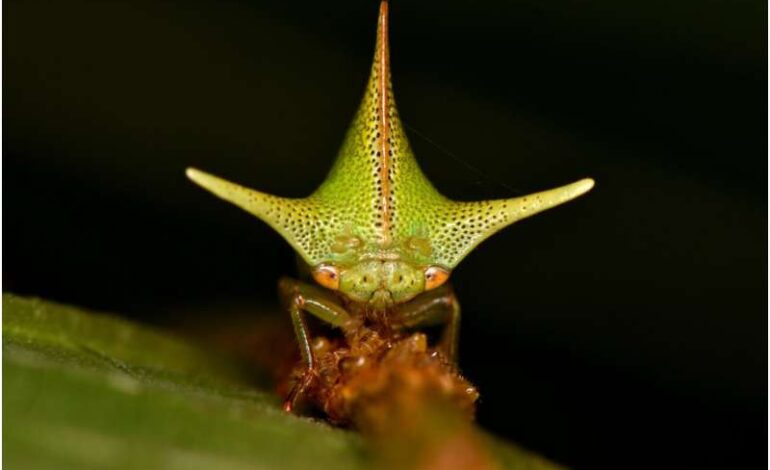Treehopper Evolution Linked to Static Electricity Detection

Research from the University of Bristol suggests that the unusual body shapes of treehopper insects may have evolved partly due to their ability to detect static electricity. In a study published in the Proceedings of the National Academy of Sciences on August 2, 2025, Dr. Sam England and Professor Daniel Robert explored how these unique morphological traits could enhance the insects’ electroreception capabilities.
Treehoppers, which comprise over 3,000 species, are renowned for their diverse forms, featuring striking adaptations such as horns, spines, and tridents. These peculiar shapes have intrigued naturalists for years, yet the exact reason behind their evolution remains unclear. While some hypotheses, such as camouflage and mimicry, apply to particular species, they do not account for the entire treehopper family.
Dr. England and Professor Robert’s research was motivated by findings that other insects, like bees and caterpillars, can sense static electricity. They sought to determine if treehoppers’ extreme body shapes serve a similar function. Their experiments revealed that predatory wasps emit static electricity and that treehoppers tend to retreat from electric fields.
Using computational modeling, the researchers demonstrated that the distinctive morphologies of treehoppers increase the strength of the electric field around them, thereby boosting their sensitivity to static electricity. Additionally, the study found that predatory wasps possess different electrostatic charges compared to the stingless bees that often guard treehoppers from threats. This suggests that treehoppers might be able to differentiate between potential predators and allies based solely on electrical signals.
Dr. England noted, “We think our study provides a really exciting launch pad for investigating static electricity as a driver of organismal morphology more generally.” He emphasized that many other species with extreme shapes, including various insects and plants, remain unexplained, and this research opens the door for further exploration.
The team intends to investigate how different treehopper morphologies may be adaptive to distinct electrical environments. Dr. England elaborated, “If we can link treehopper shapes to specific electrical ecosystems, such as particular predators approaching from certain angles with distinct static charges, this would strongly support our theories about static electricity as an evolutionary driver.”
This study not only sheds light on the adaptive strategies of treehoppers but also highlights the potential for static electricity to influence the evolutionary trajectories of various organisms. As research continues, the implications for understanding the relationship between morphology and environmental factors will become increasingly significant.
For further details, refer to the study by Sam J. England et al, titled “Electroreception in treehoppers: How extreme morphologies can increase electrical sensitivity,” published in the Proceedings of the National Academy of Sciences.






